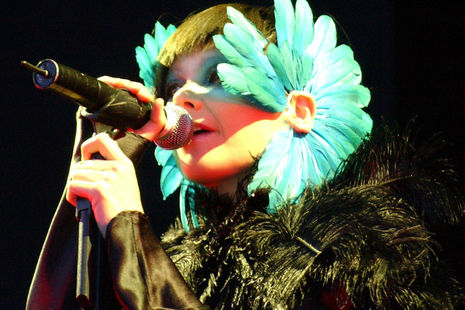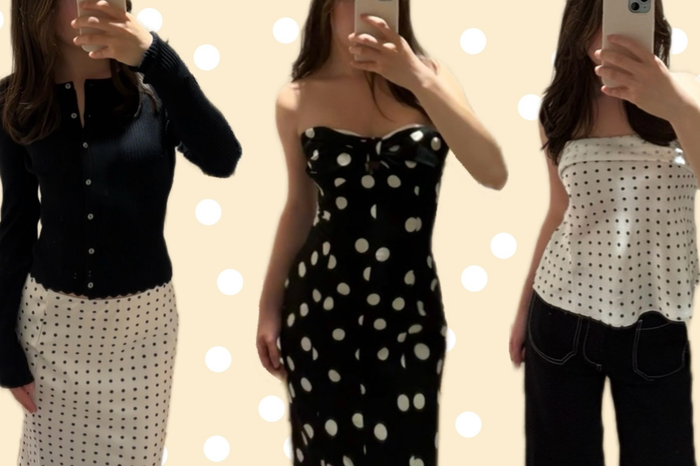How Björk uses fashion
Flossie Bullion dives into the fashion choices of Icelandic singer Björk, to examine how she promotes individuality

Music and fashion have almost always gone hand in hand: from underground subcultural movements and iconic paparazzi outfits to looks designed for concerts and red carpets, musicians are constantly fashion-forward. And recently, the stylistic choices of a certain cohort of female pop stars have become so immediately identifiable and memorable that it feels as if there is a dress code for attending each of their concerts.
This focus on being memorable and recognisable is no accident. As disposable fashion continues to become more readily available, these kinds of single-use concert outfits have exploded in popularity. This is something that these artists’ teams are almost certainly aware of, deliberately dressing artists in simple, recognisable colours and cuts which fans can easily imitate. Now, I’m not saying these types of looks aren’t totally cute and a lot of fun, but it’s also worth considering other ways in which celebrity musicians can (and have) used their platforms in fashion. In particular, Icelandic avant-garde singer Björk is known for her unusual and artistic use of fashion, alongside her status as a pioneer of experimental electronic pop music.
In the first words Björk utters at the start of her debut album Debut, she warns us: “If you ever get close to a human, be ready to get confused.” Although it is this bizarre, eccentric, and otherworldly attitude that has made her so famous, Björk’s creative and conceptual approach to both music and fashion completely resonates with the many struggles and wonders of modern human life.
“Björk’s wardrobe draws more from the natural world than from fashion history”
Many of Björk’s most notable looks draw from art, high fashion, and a variety of different cultures. She even added an aspect of performance art to Marjan Pejoski’s infamous ‘swan dress’ at the Oscars in 2001, where she ‘laid’ seven eggs on the red carpet, much to the confusion of the bodyguards who kept politely handing them back to her. Some of her most famous classic looks feature on her album covers, such as the jacket made of paper airmail envelopes designed by Hussein Chalayan worn on the aptly titled Post album cover. Beyond being an excellent visual pun on the title (which actually refers to the album being made after she moved to England), it captures the focus of the album on connection and communication in modern life, and is fitting for the wide scope of musical influences Post incorporates. The Homogenic album cover designed by Alexander McQueen is just as fabulously avant-garde, in which Björk sports an almost metallic kimono, explaining that she is like “a warrior who has to fight, not with weapons, but with love”.
Almost 30 years on, Björk is continuing to push boundaries, and after seeing the 2025 documentary of her recent Cornucopia tour, I became fascinated with her more recent fashion direction. Featuring looks designed by Iris Van Herpen and Balmain, her wardrobe draws more from the natural world than from fashion history. The looks are sculptural and artistic, and not limited to just Björk: she is the centre of an entire ecosystem of set pieces and musicians, all carefully designed. Discussing Björk’s approach, Olivia Rousteing of Balmain said “Is it fashion? Is it art? Is it furniture? There’s no name. You can’t put it in a box. You cannot label it, and I think that’s what she loved.”
“Björk is able to express sensuality and femininity on her own terms, separate from the pressure to display her body in order to advertise this”
One of the most strikingly interesting aspects of these designs is the lack of revealing and form fitting costumes. Many female artists, particularly those who are openly sexual and sensual, have spoken out about the difficulties of the way in which their bodies must be at the centre of their image, constantly examined and discussed. It is not uncommon to see male artists onstage in jeans and a t-shirt, yet a disproportionate amount of their female counterparts are in sparkly leotards. Björk’s recent work is perhaps some of her most unabashedly sensual, but her costumes express this differently to most. Her entire body is engulfed in fungal frills, or threadlike antennae, or microbiological patterns, and her face is only just visible behind a mask which transforms her into a creature of the natural world. The looks are still distinctly feminine, with layers upon layers of floaty and ethereal textures, full of yonic symbolism. In this, Björk is able to express sensuality and femininity on her own terms, separate from the pressure to display her body in order to advertise this.
The biological designs also fittingly reflect the environmental focus of Björk’s later work. As she sings: “Your past is on loop – turn it off. See this possible future and be in it.” Björk continues to look forward to a hopeful future in her music, even in the face of environmental difficulty. Not only are her looks made of sustainably sourced materials, they draw artistically from the beauty of the natural world, abandoning human patterns, silhouettes, and history (which fashion is often so fond of reviving). “Your past is on loop – turn it off” may just as well apply to those who are constantly devoted to the trend cycle, neglecting fashion’s potential in expressing individuality. As the many microtrends of modern life continue to encourage the damaging effects of disposable fashion, the way in which Björk uses her platform in the arts to promote individuality is perhaps more important than ever.
 News / Cambridge students accused of ‘gleeful’ racist hate crime4 December 2025
News / Cambridge students accused of ‘gleeful’ racist hate crime4 December 2025 News / Uni redundancy consultation ‘falls short of legal duties’, unions say6 December 2025
News / Uni redundancy consultation ‘falls short of legal duties’, unions say6 December 2025 News / Churchill announces June Event in place of May Ball3 December 2025
News / Churchill announces June Event in place of May Ball3 December 2025 News / Cambridge cosies up to Reform UK30 November 2025
News / Cambridge cosies up to Reform UK30 November 2025 Comment / Don’t get lost in the Bermuda Triangle of job hunting 24 November 2025
Comment / Don’t get lost in the Bermuda Triangle of job hunting 24 November 2025









